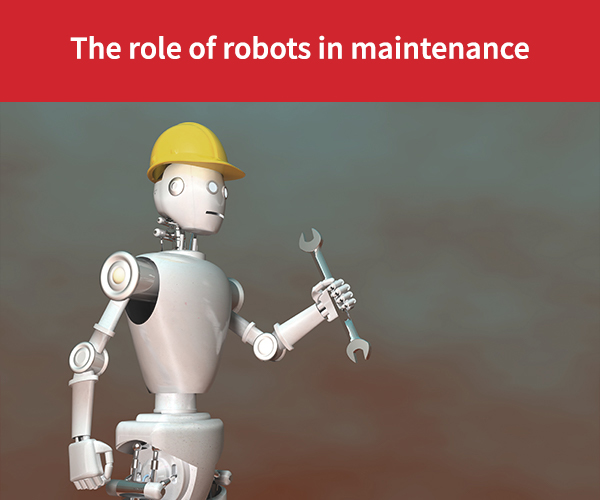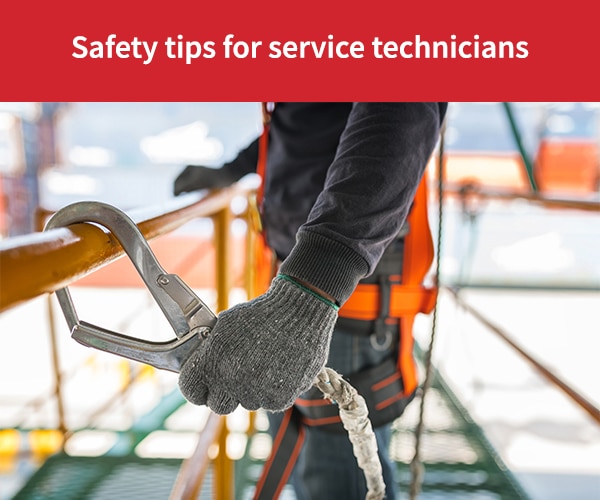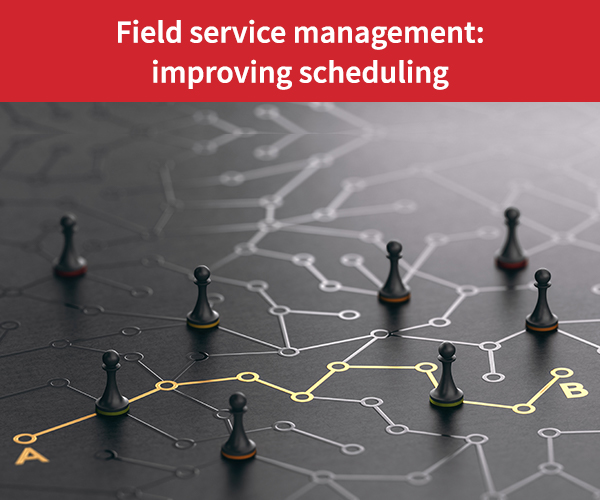
- Gestion d’interventions
- Maintenance
- Technologies
Using maintenance robots
Today, a growing number of robots are being used to inspect industrial equipment in areas that are difficult or dangerous for humans to access. Robots are also helping with maintenance tasks on high-voltage lines, wind turbines and oil platforms.
While it’s easy to wonder whether these robots will be the future colleagues of maintenance technicians, these are not humanoids like C-3PO, the talkative Star Wars robot who could easily have a conversation with a customer. That’s still in the future. In the meantime, there are an increasing number of so-called inspection robots that can replace humans when their safety is endangered.
Robots can inspect every corner of an industrial site, including dangerous, high and difficult-to-access areas such large tanks, ventilation ducts and hostile environments with extreme weather conditions. They can also intervene immediately at the first sign of failure, with no time constraints.
Like large, remote-controlled cars
Autonomous and semi-autonomous robots, such as those offered by Sprint Robotics and Invert Robotics, look like large, remote-controlled cars that move on swiveling wheels or tracks. They’re equipped with high-definition cameras, connected sensors, and even articulating arms.
These robots can perform a number of different types of operations, from routine inspections to more sensitive tasks such as detecting gas or liquid leaks. In preventive maintenance, they can perform cleaning tasks and detect anomalies, such as rough spots on the surface of industrial equipment. In curative maintenance, they can manipulate objects, for example to open or close valves or activate switches.
Like the robot vacuums people use in their homes, these robots can move around autonomously in a specific area, perform actions according to a predefined scenario and sound an alert if there’s a problem.
Robots can also communicate with other robots to coordinate task distribution. The advent of 5G, with its promises of very high speeds and latency as low as a millisecond, will facilitate these communications.
Formulating a Maintenance Plan for Industrial Robots
A crucial part of employing robots for maintenance work is establishing a robust and comprehensive maintenance plan. Industrial robots, while designed for precision and longevity, still require regular preventative maintenance to ensure optimal performance and avoid unforeseen breakdowns. In essence, preventative maintenance for industrial robots is the catalyst to prolonging their operational lifespan and enhancing productivity.
Your maintenance plan should provide a detailed maintenance schedule, outlining when and what type of servicing is required for each robot. This could range from simple cleaning tasks, recalibration, lubrication to more comprehensive component checks. Depending on the robot and its function, certain maintenance tasks may need to be performed more frequently than others.
Utilizing the Teach Pendant in Preventative Maintenance
One tool that is vital for maintenance and repairs of industrial robots is the teach pendant. This handheld device allows technicians to program, troubleshoot, and control robots directly. By using the teach pendant, technicians can manually guide the robot through different sequences, making it easier to identify any operational issues and perform necessary maintenance tasks.
Through the teach pendant, technicians can execute certain preventative maintenance tasks. They can assess the robot’s accuracy, repeatability, and alignment, identifying any deviations from normal parameters. This data is invaluable when evaluating the robot’s overall health, helping to foresee any potential issues and schedule appropriate maintenance tasks.
In essence, having a well-planned maintenance schedule for your industrial robots, complemented by the effective use of tools like the teach pendant, is critical in ensuring their optimal performance and longevity. Through preventative maintenance, industrial robots can continue to operate efficiently and productively, maximizing your return on investment.
Suction cups help climbing robots stick to surfaces
While most robots use magnets to climb walls, Invert Robotics has equipped climbing robots with suction cups so they can stick to most non-magnetic surfaces. That means they can inspect crop drying silos and large tanks from all angles, even upside down, and quickly spot cracks and surface defects as soon as they appear.
Invert Robotics specializes in robotic inspection for the food industry, more specifically the dairy industry and products derived from milk, so hygiene is a key requirement. Robots meet health requirements, minimizing human presence in areas that are dedicated to products and avoid contamination from humans.
Inspections by climbing robots take an average of two hours. During this time, personnel remain safely on the ground. They can view live video footage with no need to take risks by climbing up scaffolding or ropes or being trapped in confined spaces. The video footage also provides a level of precision that no human could.
This robot climbs on smooth walls
A European research project called 4D Hybrid is focused on developing an inspection robot that can climb completely smooth metal walls, such as those on the hull of boat or the structure of an offshore oil platform. Rubber traction tracks on the robot use a suction grip system to keep it in contact with the surface.
The robot, which can be programmed to detect corrosion, clean it and repair the altered surface, must be able to support its own weight while moving on the vertical wall, and to hold itself vertically in place while making repairs. It must also be able to work in temperatures ranging from -20 to +35 degrees and to withstand water, salt and wind.
Robots for cable and wind turbine maintenance
There are also robots that work at heights, such as those that crawl along cables or high-voltage power lines to detect corrosion or wear on conductors, assess the state of junctions, and identify invasive vegetation. Some robots even have mechanical arms to tighten and loosen bolts.
According to a Radio Canada article, the Hydro-Québec Research Institute is working on a new robot inspector, called LineRanger, that can overcome obstacles with “disconcerting ease” and inspect up to twenty kilometers of live power lines in one day
A THERMAL IMAGING CAMERA DETECTS MATERIAL DEFECTS
The RIWEA robot was developed by German robotics researchers to provide maintenance on offshore wind turbines. This robot focuses on inspecting the turbines, as the slightest defect or crack can jeopardize the entire system. It also detects delamination on the rotor blades.
In a website post, the French website, Energies de la Mer, noted that the rotor blades, which are typically made of a plastic and fiberglass alloy, are subjected to powerful stresses and wear that are even more important than those caused by basic wind friction on land.
For this situation, RIWEA is equipped with an infrared sensor to measure the heat on the surface of the rotor blades, a thermal camera that detects the slightest defect in the material and a system that combines ultrasound with a high-resolution camera to identify damage that’s invisible to the human eye.
Pole robots inspect pipes
According to an article by Cnews, Engie, a subsidiary of the Parisian urban heating company (CPCU), is using a robot that looks very different. It’s a kind of pole, one meter long, clad with sensors that scan the walls of pipes to verify that the thickness of the metal, which often suffers from corrosion, is adequate.
The device can be used over a length of 200 m before a new opening in the ground must be drilled. The CPCU is considering the possibility of passing its robot-inspector through the 800 valves in its network to reduce the number of excavations and the resulting construction sites.
Maintenance robots are everywhere, including in our pipes!
Our similar articles.
-
- Technician
- Maintenance
- Gestion d’interventions
- Security
- Application mobile
- Technicien
Ensuring the safety of maintenance technicians
November 25, 2020 -
- Maintenance
- Gestion d’interventions
- Artificial Intelligence
- Technologies
Maintenance in the factory of the future
February 19, 2019 -
- Technician
- Field Service Management
- Gestion d’interventions
- Optimization
- Productivité
5 tips for better field service scheduling
January 8, 2020


